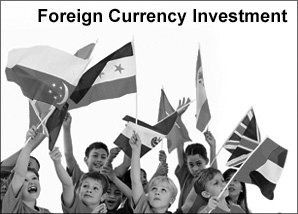Foreign exchange rates are one of the most important measures of a country’s relative level of economic health.2 It plays a key role in a country’s level of trade and also provides a window to its economic stability. This is why foreign exchange rates are constantly monitored and analysed by economists, investors and governments.3
The Rise and Fall of Currencies
The Ringgit’s fall to a 17-year low of 4.2990 as at 26 August 2015 against the U.S. Dollar4. Various factors determine variations and fluctuations of a country’s foreign exchange rate.
Inflation
As a general rule, a country with a lower inflation rate will experience an appreciation in the value of its currency as its purchasing power increases relative to other currencies.3
The Ringgit Scenario
In the case of the ringgit, the reverse has been the case. From a low of 0.1% in February last year, Malaysia’s inflation rate increased to 3.3% in July 2015. It is a potentially vicious cycle because the weaker ringgit has boosted the prices of imports resulting in inflation, which has also been affected by increased household expenditure since the introduction of the 6% goods and services tax (GST) in April 2015.5 High inflation, in turn, could continue to put downward pressure on the Ringgit.
Interest Rates
Foreign exchange rates, interest rates and inflation are all highly correlated. By determining the interest rates, central banks exert influence over both inflation and exchange rates, and changing interest rates impact inflation and currency values. Higher interest rates offer lenders a higher return relative to other countries, thus attracting more foreign capital causing the exchange rate to rise.2
Balance of Payments
A country’s current account reflects the balance of trade between the country and its trading partners, reflecting all payments between countries for goods, services, interest and dividends. A deficit in the current account shows a country is spending more on foreign trade than it is earning, and that it is potentially borrowing capital from foreign sources to make up the deficit. A country that struggles to attract enough capital inflows to finance a current account deficit will see a depreciation in its currency.3
Government Debt
Governments will typically engage in large-scale deficit financing to pay for public sector projects and governmental funding. while such activity stimulates the domestic economy, nations with large public deficits and debts are less attractive to foreign investors. A large public debt encourages inflation and if markets fear that a government may default on its debts, investors will sell their bonds, both of which will cause a fall in value of the exchange rate.6
The Ringgit Scenario
Malaysia is amongst the most vulnerable countries to the potential rise in U.S. interest rates with the level of foreign ownership of government debt among the highest in the emerging world.7
Terms of Trade
Terms of trade is a ratio comparing export prices to import prices, and is related to current accounts and the balance of payments. If the price of a country’s exports rises by a greater rate than that of its imports, its terms of trade have favourably improved. This results in rising revenues from exports, which provides increased demand for the country’s currency and subsequently an increase in the currency’s value.2
Political Stability & Economic Performance
Foreign investors, unsurprisingly, seek out stable countries with strong economic performance and political stability in which to invest their capital. A country with such positive attributes will draw investment funds away from other countries perceived to have more political and economic risk. Increase in foreign capital, in turn, leads to an appreciation in the value of its domestic currency. Political turmoil, on the other hand, can cause a loss of confidence in a currency and a movement of capital to the currencies of more stable countries.3
Ringgit Against 5 Major Currencies
On-the-go or in the comfort of your home, you can open an HSBC Foreign Currency Savings Account via HSBC Personal Internet Banking.
Apply now at www.hsbc.com.my
Whether you are actively trading in the foreign exchange market or have a need for foreign currency because you have children studying overseas or you have property investments abroad or you need to spend on food or goods imported from another country, the on-going volatility of the Ringgit will affect you. By understanding the factors that influence foreign exchange rates, you may be able to make a more informed decision when buying foreign currency.
To find out about HSBC’s Foreign Exchange Solutions, please feel free to talk to your relationship Manager or walk into any HSBC Bank branch for more information.
• Sources: 1 Bloomberg.com, Asian Currencies Record Biggest Monthly Decline in Three Years, August 31, 2015. 2 Investopedia.com, 6 Factors That Influence Exchange Rates, undated. 3 CompareRemit.com, 8 Key Factors That Affect Foreign Exchange Rates, undated. 4 The Malaysian Insider, Ringgit Falls to RM4.2325 v USD on Concern Over Further Reserve Depletion, September 3, 2015. 5 The Malaysian Insider, July Inflation Picks Up More Than Expected To 3.3%, August 19, 2015. 6 Economicshelp.org, Factors Which Influence the Exchange Rate, undated. 7 Financial Times.com, Malaysian Ringgit Sinks as China Ripples Spread, August 14, 2015.


 LIKE THIS ARTICLE?
LIKE THIS ARTICLE?





















